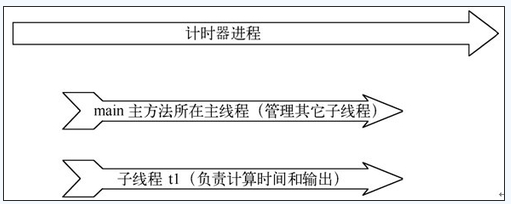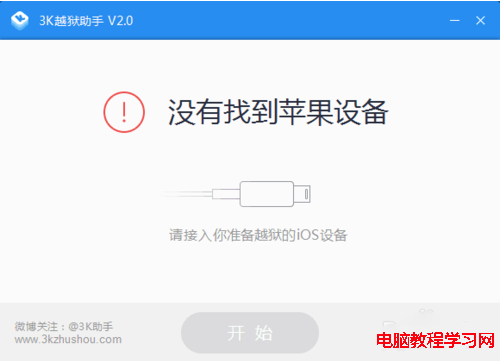編輯:關於Android編程
本文匯集36個Android開發常用經典代碼片段,包括撥打電話、發送短信、喚醒屏幕並解鎖、是否有網絡連接、動態顯示或者是隱藏軟鍵盤等,希望對您有所幫助。
//36個Android開發常用代碼片段
//撥打電話
public static void call(Context context, String phoneNumber) {
context.startActivity( new Intent(Intent.ACTION_CALL, Uri.parse( "tel:" + phoneNumber)));
}
//跳轉至撥號界面
public static void callDial(Context context, String phoneNumber) {
context.startActivity( new Intent(Intent.ACTION_DIAL, Uri.parse( "tel:" + phoneNumber)));
}
//發送短信
public static void sendSms(Context context, String phoneNumber,
String content) {
Uri uri = Uri.parse( "smsto:"
+ (TextUtils.isEmpty(phoneNumber) ? "" : phoneNumber));
Intent intent = new Intent(Intent.ACTION_SENDTO, uri);
intent.putExtra( "sms_body" , TextUtils.isEmpty(content) ? "" : content);
context.startActivity(intent);
}
//喚醒屏幕並解鎖
public static void wakeUpAndUnlock(Context context){
KeyguardManager km= (KeyguardManager) context.getSystemService(Context.KEYGUARD_SERVICE);
KeyguardManager.KeyguardLock kl = km.newKeyguardLock( "unLock" );
//解鎖
kl.disableKeyguard();
//獲取電源管理器對象
PowerManager pm=(PowerManager) context.getSystemService(Context.POWER_SERVICE);
//獲取PowerManager.WakeLock對象,後面的參數|表示同時傳入兩個值,最後的是LogCat裡用的Tag
PowerManager.WakeLock wl = pm.newWakeLock(PowerManager.ACQUIRE_CAUSES_WAKEUP | PowerManager.SCREEN_DIM_WAKE_LOCK, "bright" );
//點亮屏幕
wl.acquire();
//釋放
wl.release();
}
//需要添加權限
<uses-permission android:name= "android.permission.WAKE_LOCK" />
<uses-permission android:name= "android.permission.DISABLE_KEYGUARD" />
//判斷當前App處於前台還是後台狀態
public static boolean isApplicationBackground( final Context context) {
ActivityManager am = (ActivityManager) context
.getSystemService(Context.ACTIVITY_SERVICE);
@SuppressWarnings ( "deprecation" )
List<ActivityManager.RunningTaskInfo> tasks = am.getRunningTasks( 1 );
if (!tasks.isEmpty()) {
ComponentName topActivity = tasks.get( 0 ).topActivity;
if (!topActivity.getPackageName().equals(context.getPackageName())) {
return true ;
}
}
return false ;
}
//需要添加權限
<uses-permission
android:name= "android.permission.GET_TASKS" />
//判斷當前手機是否處於鎖屏(睡眠)狀態
public static boolean isSleeping(Context context) {
KeyguardManager kgMgr = (KeyguardManager) context
.getSystemService(Context.KEYGUARD_SERVICE);
boolean isSleeping = kgMgr.inKeyguardRestrictedInputMode();
return isSleeping;
}
//判斷當前是否有網絡連接
public static boolean isOnline(Context context) {
ConnectivityManager manager = (ConnectivityManager) context
.getSystemService(Activity.CONNECTIVITY_SERVICE);
NetworkInfo info = manager.getActiveNetworkInfo();
if (info != null && info.isConnected()) {
return true ;
}
return false ;
}
//判斷當前是否是WIFI連接狀態
public static boolean isWifiConnected(Context context) {
ConnectivityManager connectivityManager = (ConnectivityManager) context
.getSystemService(Context.CONNECTIVITY_SERVICE);
NetworkInfo wifiNetworkInfo = connectivityManager
.getNetworkInfo(ConnectivityManager.TYPE_WIFI);
if (wifiNetworkInfo.isConnected()) {
return true ;
}
return false ;
}
//安裝APK
public static void installApk(Context context, File file) {
Intent intent = new Intent();
intent.setAction( "android.intent.action.VIEW" );
intent.addCategory( "android.intent.category.DEFAULT" );
intent.setType( "application/vnd.android.package-archive" );
intent.setDataAndType(Uri.fromFile(file),
"application/vnd.android.package-archive" );
intent.setFlags(Intent.FLAG_ACTIVITY_NEW_TASK);
context.startActivity(intent);
}
//判斷當前設備是否為手機
public static boolean isPhone(Context context) {
TelephonyManager telephony = (TelephonyManager) context
.getSystemService(Context.TELEPHONY_SERVICE);
if (telephony.getPhoneType() == TelephonyManager.PHONE_TYPE_NONE) {
return false ;
} else {
return true ;
}
}
//獲取當前設備寬高,單位px
@SuppressWarnings ( "deprecation" )
public static int getDeviceWidth(Context context) {
WindowManager manager = (WindowManager) context
.getSystemService(Context.WINDOW_SERVICE);
return manager.getDefaultDisplay().getWidth();
}
@SuppressWarnings ( "deprecation" )
public static int getDeviceHeight(Context context) {
WindowManager manager = (WindowManager) context
.getSystemService(Context.WINDOW_SERVICE);
return manager.getDefaultDisplay().getHeight();
}
//獲取當前設備的IMEI,需要與上面的isPhone()一起使用
@TargetApi (Build.VERSION_CODES.CUPCAKE)
public static String getDeviceIMEI(Context context) {
String deviceId;
if (isPhone(context)) {
TelephonyManager telephony = (TelephonyManager) context
.getSystemService(Context.TELEPHONY_SERVICE);
deviceId = telephony.getDeviceId();
} else {
deviceId = Settings.Secure.getString(context.getContentResolver(),
Settings.Secure.ANDROID_ID);
}
return deviceId;
}
//獲取當前設備的MAC地址
public static String getMacAddress(Context context) {
String macAddress;
WifiManager wifi = (WifiManager) context
.getSystemService(Context.WIFI_SERVICE);
WifiInfo info = wifi.getConnectionInfo();
macAddress = info.getMacAddress();
if ( null == macAddress) {
return "" ;
}
macAddress = macAddress.replace( ":" , "" );
return macAddress;
}
//獲取當前程序的版本號
public static String getAppVersion(Context context) {
String version = "0" ;
try {
version = context.getPackageManager().getPackageInfo(
context.getPackageName(), 0 ).versionName;
} catch (PackageManager.NameNotFoundException e) {
e.printStackTrace();
}
return version;
}
//收集設備信息,用於信息統計分析
public static Properties collectDeviceInfo(Context context) {
Properties mDeviceCrashInfo = new Properties();
try {
PackageManager pm = context.getPackageManager();
PackageInfo pi = pm.getPackageInfo(context.getPackageName(),
PackageManager.GET_ACTIVITIES);
if (pi != null ) {
mDeviceCrashInfo.put(VERSION_NAME,
pi.versionName == null ? "not set" : pi.versionName);
mDeviceCrashInfo.put(VERSION_CODE, pi.versionCode);
}
} catch (PackageManager.NameNotFoundException e) {
Log.e(TAG, "Error while collect package info" , e);
}
Field[] fields = Build. class .getDeclaredFields();
for (Field field : fields) {
try {
field.setAccessible( true );
mDeviceCrashInfo.put(field.getName(), field.get( null ));
} catch (Exception e) {
Log.e(TAG, "Error while collect crash info" , e);
}
}
return mDeviceCrashInfo;
}
public static String collectDeviceInfoStr(Context context) {
Properties prop = collectDeviceInfo(context);
Set deviceInfos = prop.keySet();
StringBuilder deviceInfoStr = new StringBuilder( "{\n" );
for (Iterator iter = deviceInfos.iterator(); iter.hasNext();) {
Object item = iter.next();
deviceInfoStr.append( "\t\t\t" + item + ":" + prop.get(item)
+ ", \n" );
}
deviceInfoStr.append( "}" );
return deviceInfoStr.toString();
}
//是否有SD卡
public static boolean haveSDCard() {
return android.os.Environment.getExternalStorageState().equals(
android.os.Environment.MEDIA_MOUNTED);
}
//動態隱藏軟鍵盤
@TargetApi (Build.VERSION_CODES.CUPCAKE)
public static void hideSoftInput(Activity activity) {
View view = activity.getWindow().peekDecorView();
if (view != null ) {
InputMethodManager inputmanger = (InputMethodManager) activity
.getSystemService(Context.INPUT_METHOD_SERVICE);
inputmanger.hideSoftInputFromWindow(view.getWindowToken(), 0 );
}
}
@TargetApi (Build.VERSION_CODES.CUPCAKE)
public static void hideSoftInput(Context context, EditText edit) {
edit.clearFocus();
InputMethodManager inputmanger = (InputMethodManager) context
.getSystemService(Context.INPUT_METHOD_SERVICE);
inputmanger.hideSoftInputFromWindow(edit.getWindowToken(), 0 );
}
//動態顯示軟鍵盤
@TargetApi (Build.VERSION_CODES.CUPCAKE)
public static void showSoftInput(Context context, EditText edit) {
edit.setFocusable( true );
edit.setFocusableInTouchMode( true );
edit.requestFocus();
InputMethodManager inputManager = (InputMethodManager) context
.getSystemService(Context.INPUT_METHOD_SERVICE);
inputManager.showSoftInput(edit, 0 );
}
//動態顯示或者是隱藏軟鍵盤
@TargetApi (Build.VERSION_CODES.CUPCAKE)
public static void toggleSoftInput(Context context, EditText edit) {
edit.setFocusable( true );
edit.setFocusableInTouchMode( true );
edit.requestFocus();
InputMethodManager inputManager = (InputMethodManager) context
.getSystemService(Context.INPUT_METHOD_SERVICE);
inputManager.toggleSoftInput(InputMethodManager.SHOW_FORCED, 0 );
}
//主動回到Home,後台運行
public static void goHome(Context context) {
Intent mHomeIntent = new Intent(Intent.ACTION_MAIN);
mHomeIntent.addCategory(Intent.CATEGORY_HOME);
mHomeIntent.addFlags(Intent.FLAG_ACTIVITY_NEW_TASK
| Intent.FLAG_ACTIVITY_RESET_TASK_IF_NEEDED);
context.startActivity(mHomeIntent);
}
//獲取狀態欄高度
//注意,要在onWindowFocusChanged中調用,在onCreate中獲取高度為0
@TargetApi (Build.VERSION_CODES.CUPCAKE)
public static int getStatusBarHeight(Activity activity) {
Rect frame = new Rect();
activity.getWindow().getDecorView().getWindowVisibleDisplayFrame(frame);
return frame.top;
}
//獲取狀態欄高度+標題欄(ActionBar)高度
//(注意,如果沒有ActionBar,那麼獲取的高度將和上面的是一樣的,只有狀態欄的高度)
public static int getTopBarHeight(Activity activity) {
return activity.getWindow().findViewById(Window.ID_ANDROID_CONTENT)
.getTop();
}
//獲取MCC+MNC代碼 (SIM卡運營商國家代碼和運營商網絡代碼)
//僅當用戶已在網絡注冊時有效, CDMA 可能會無效(中國移動:46000 //46002, 中國聯通:46001,中國電信:46003)
public static String getNetworkOperator(Context context) {
TelephonyManager telephonyManager = (TelephonyManager) context
.getSystemService(Context.TELEPHONY_SERVICE);
return telephonyManager.getNetworkOperator();
}
//返回移動網絡運營商的名字
//(例:中國聯通、中國移動、中國電信) 僅當用戶已在網絡注冊時有效, //CDMA 可能會無效)
public static String getNetworkOperatorName(Context context) {
TelephonyManager telephonyManager = (TelephonyManager) context
.getSystemService(Context.TELEPHONY_SERVICE);
return telephonyManager.getNetworkOperatorName();
}
//返回移動終端類型
PHONE_TYPE_NONE :0 手機制式未知
PHONE_TYPE_GSM :1 手機制式為GSM,移動和聯通
PHONE_TYPE_CDMA :2 手機制式為CDMA,電信
PHONE_TYPE_SIP:3
public static int getPhoneType(Context context) {
TelephonyManager telephonyManager = (TelephonyManager) context
.getSystemService(Context.TELEPHONY_SERVICE);
return telephonyManager.getPhoneType();
}
//判斷手機連接的網絡類型(2G,3G,4G)
//聯通的3G為UMTS或HSDPA,移動和聯通的2G為GPRS或EGDE,電信的2G為CDMA,電信的3G為EVDO
public class Constants {
/**
* Unknown network class
*/
public static final int NETWORK_CLASS_UNKNOWN = 0 ;
/**
* wifi net work
*/
public static final int NETWORK_WIFI = 1 ;
/**
* "2G" networks
*/
public static final int NETWORK_CLASS_2_G = 2 ;
/**
* "3G" networks
*/
public static final int NETWORK_CLASS_3_G = 3 ;
/**
* "4G" networks
*/
public static final int NETWORK_CLASS_4_G = 4 ;
}
public static int getNetWorkClass(Context context) {
TelephonyManager telephonyManager = (TelephonyManager) context
.getSystemService(Context.TELEPHONY_SERVICE);
switch (telephonyManager.getNetworkType()) {
case TelephonyManager.NETWORK_TYPE_GPRS:
case TelephonyManager.NETWORK_TYPE_EDGE:
case TelephonyManager.NETWORK_TYPE_CDMA:
case TelephonyManager.NETWORK_TYPE_1xRTT:
case TelephonyManager.NETWORK_TYPE_IDEN:
return Constants.NETWORK_CLASS_2_G;
case TelephonyManager.NETWORK_TYPE_UMTS:
case TelephonyManager.NETWORK_TYPE_EVDO_0:
case TelephonyManager.NETWORK_TYPE_EVDO_A:
case TelephonyManager.NETWORK_TYPE_HSDPA:
case TelephonyManager.NETWORK_TYPE_HSUPA:
case TelephonyManager.NETWORK_TYPE_HSPA:
case TelephonyManager.NETWORK_TYPE_EVDO_B:
case TelephonyManager.NETWORK_TYPE_EHRPD:
case TelephonyManager.NETWORK_TYPE_HSPAP:
return Constants.NETWORK_CLASS_3_G;
case TelephonyManager.NETWORK_TYPE_LTE:
return Constants.NETWORK_CLASS_4_G;
default :
return Constants.NETWORK_CLASS_UNKNOWN;
}
}
//判斷當前手機的網絡類型(WIFI還是2,3,4G)
//需要用到上面的方法
public static int getNetWorkStatus(Context context) {
int netWorkType = Constants.NETWORK_CLASS_UNKNOWN;
ConnectivityManager connectivityManager = (ConnectivityManager) context
.getSystemService(Context.CONNECTIVITY_SERVICE);
NetworkInfo networkInfo = connectivityManager.getActiveNetworkInfo();
if (networkInfo != null && networkInfo.isConnected()) {
int type = networkInfo.getType();
if (type == ConnectivityManager.TYPE_WIFI) {
netWorkType = Constants.NETWORK_WIFI;
} else if (type == ConnectivityManager.TYPE_MOBILE) {
netWorkType = getNetWorkClass(context);
}
}
return netWorkType;
}
//px-dp轉換
public static int dip2px(Context context, float dpValue) {
final float scale = context.getResources().getDisplayMetrics().density;
return ( int ) (dpValue * scale + 0 .5f);
}
public static int px2dip(Context context, float pxValue) {
final float scale = context.getResources().getDisplayMetrics().density;
return ( int ) (pxValue / scale + 0 .5f);
}
//px-sp轉換
public static int px2sp(Context context, float pxValue) {
final float fontScale = context.getResources().getDisplayMetrics().scaledDensity;
return ( int ) (pxValue / fontScale + 0 .5f);
}
public static int sp2px(Context context, float spValue) {
final float fontScale = context.getResources().getDisplayMetrics().scaledDensity;
return ( int ) (spValue * fontScale + 0 .5f);
}
//把一個毫秒數轉化成時間字符串
//格式為小時/分/秒/毫秒(如:24903600 –> 06小時55分03秒600毫秒)
/**
* @param millis
* 要轉化的毫秒數。
* @param isWhole
* 是否強制全部顯示小時/分/秒/毫秒。
* @param isFormat
* 時間數字是否要格式化,如果true:少位數前面補全;如果false:少位數前面不補全。
* @return 返回時間字符串:小時/分/秒/毫秒的格式(如:24903600 --> 06小時55分03秒600毫秒)。
*/
public static String millisToString( long millis, boolean isWhole,
boolean isFormat) {
String h = "" ;
String m = "" ;
String s = "" ;
String mi = "" ;
if (isWhole) {
h = isFormat ? "00小時" : "0小時" ;
m = isFormat ? "00分" : "0分" ;
s = isFormat ? "00秒" : "0秒" ;
mi = isFormat ? "00毫秒" : "0毫秒" ;
}
long temp = millis;
long hper = 60 * 60 * 1000 ;
long mper = 60 * 1000 ;
long sper = 1000 ;
if (temp / hper > 0 ) {
if (isFormat) {
h = temp / hper < 10 ? "0" + temp / hper : temp / hper + "" ;
} else {
h = temp / hper + "" ;
}
h += "小時" ;
}
temp = temp % hper;
if (temp / mper > 0 ) {
if (isFormat) {
m = temp / mper < 10 ? "0" + temp / mper : temp / mper + "" ;
} else {
m = temp / mper + "" ;
}
m += "分" ;
}
temp = temp % mper;
if (temp / sper > 0 ) {
if (isFormat) {
s = temp / sper < 10 ? "0" + temp / sper : temp / sper + "" ;
} else {
s = temp / sper + "" ;
}
s += "秒" ;
}
temp = temp % sper;
mi = temp + "" ;
if (isFormat) {
if (temp < 100 && temp >= 10 ) {
mi = "0" + temp;
}
if (temp < 10 ) {
mi = "00" + temp;
}
}
mi += "毫秒" ;
return h + m + s + mi;
}
格式為小時/分/秒/毫秒(如:24903600 –> 06小時55分03秒)。
/**
*
* @param millis
* 要轉化的毫秒數。
* @param isWhole
* 是否強制全部顯示小時/分/秒/毫秒。
* @param isFormat
* 時間數字是否要格式化,如果true:少位數前面補全;如果false:少位數前面不補全。
* @return 返回時間字符串:小時/分/秒/毫秒的格式(如:24903600 --> 06小時55分03秒)。
*/
public static String millisToStringMiddle( long millis, boolean isWhole,
boolean isFormat) {
return millisToStringMiddle(millis, isWhole, isFormat, "小時" , "分鐘" , "秒" );
}
public static String millisToStringMiddle( long millis, boolean isWhole,
boolean isFormat, String hUnit, String mUnit, String sUnit) {
String h = "" ;
String m = "" ;
String s = "" ;
if (isWhole) {
h = isFormat ? "00" + hUnit : "0" + hUnit;
m = isFormat ? "00" + mUnit : "0" + mUnit;
s = isFormat ? "00" + sUnit : "0" + sUnit;
}
long temp = millis;
long hper = 60 * 60 * 1000 ;
long mper = 60 * 1000 ;
long sper = 1000 ;
if (temp / hper > 0 ) {
if (isFormat) {
h = temp / hper < 10 ? "0" + temp / hper : temp / hper + "" ;
} else {
h = temp / hper + "" ;
}
以上就是本文的全部內容,希望對大家的學習有所幫助,也希望大家多多支持本站。
 Android Studio--從Java線程到安卓線程
Android Studio--從Java線程到安卓線程
簡述:相信很多學安卓的都是從java入門之後開始進行安卓的學習,而當我們面臨安卓線程的書寫的時候,發現安卓線程並不是我們想象中使用java的線程寫法就可以。java線程的
 太極越獄沒有蘋果驅動應該如何解決
太極越獄沒有蘋果驅動應該如何解決
有些在使用越獄工具的朋友反映,使用過程中會提示“沒有找到蘋果設備”,由於這個錯誤提醒導致越獄不能繼續進行。當遇到這種情況我們應該怎麼
 Android開發牛刀小試之“AA算錢軟件”開發(二)
Android開發牛刀小試之“AA算錢軟件”開發(二)
今天主要修改了幾個bug,然後改了下背景圖片和圖標,添加了變動人數的功能,即:指定參與AA的人數,參與AA計算。還有就是利用getResources().getIdent
 Android自定義View實現BMI指數條
Android自定義View實現BMI指數條
最近項目需要,需要做一個BMI指數的指示條,先上效果圖: BMI指數從18到35,然後上面指示條的顏色會隨著偏移量的變化而改變,數字顯示當前的BMI指數,下面的BMI標准